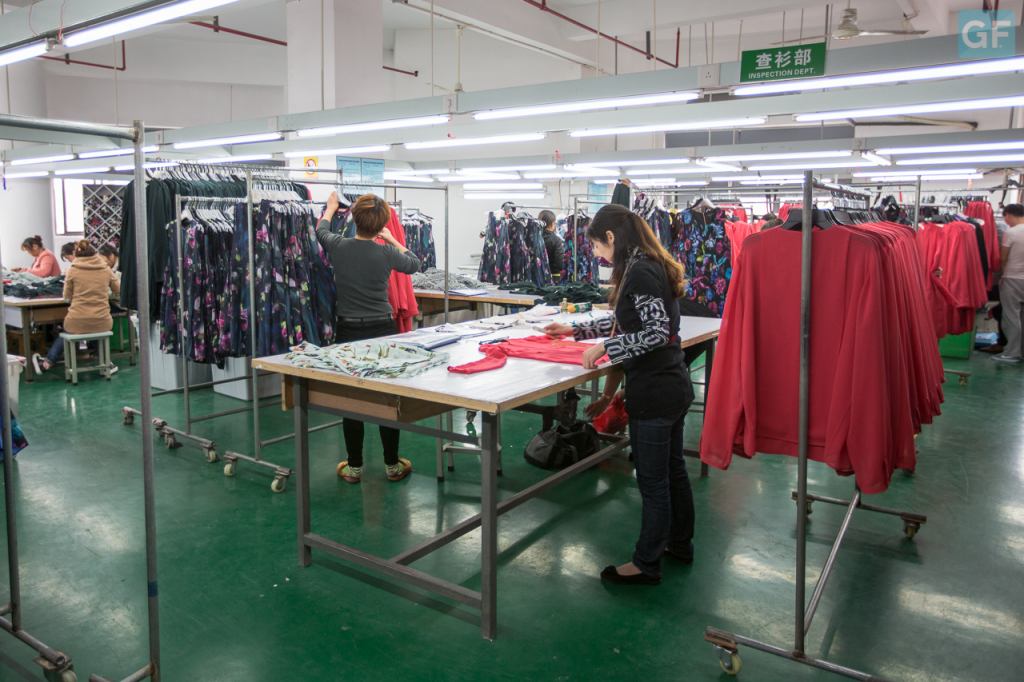
Near-shore manufacturing is not enough.
Continuing with the analysis of the previous article from the Blog on the “fast fashion” model and why not all fashion labels can integrate this system into their organization, we know that part of the formula for fast manufacturing, reducing production times to the minimum, is near-shore manufacturing. For European textile companies, this means manufacturing in the Mediterranean Basin and Eastern Europe; for American companies, in Central America and some other Latin American location such as Mexico, Colombia or Peru.
However, it is clear that this alone is not enough. It is necessary to go actively deeper into the organization; to jump in and dive into the “deep and dark waters” of processes, guidelines and protocols. If they hinder or slow the pace needed to achieve the goal of designing, producing and distributing items in the shortest possible time, then they must be modified and adapted to the new model that we seek to adopt.
For this reason, the competitors of the creators of this model or of those who have successfully replicated it can bring the manufacturing closer to their markets, but they lack an organization geared towards providing fast response to trends and the consumer tastes. They fall short because it is very difficult to integrate this ability when it is not part of the original DNA of the organization.
It can certainly be done, but it is necessary to maintain focus and act on a corporate level!
Work in origin and at the head offices.
Much has been analyzed on this topic and for that reason, professionals in the textile and fashion industry note that it is not easy to duplicate the fast fashion model of flagship brands without a total restructuring and thorough streamlining of processes of design, manufacturing and distribution. In fact, it would be impossible unless changes are made to systems and planning departments to render them fully agile in their response to the business model selected, contrary to the current situation –which has been the same for several years—where the business model had to be adapted to the constraints and protocols required by these areas. The examples given in the previous article of the blog –timely delivery of signed invoices and the registration process of a new provider—serve as proof of this situation.
Based on this, brands have gained speed in the process of creating and developing a very important portion of their designs by approving their production within a short, set period of time.
Success depends on short-term, detailed planning.
It is wrongly thought that fast response is not supported by advance planning. Of course, the opposite is true. In order to react quickly and effectively everything must be planned thoroughly in advance.
The success of these few global labels lies in working with agility and with exhaustive, advanced, short-term planning in the production of their designs. Thus they offer fast fashion, which means the ability to put for sale in their stores trendy styles that other brands do not yet have in their shelves. The gene of immediacy in the decision-making process is deep in the DNA of these companies. They all have a clear concept of what “urgent” means, and they worship it every working day.
With the support of detailed planning, all creative decisions are quickly generated from almost spontaneous conversations in the central office. In general, these offices are large, open-plan areas. Designers, buyers and sales assistants are close to one another, they can talk face-to-face if they wish to do so during the working day. They do it spontaneously whenever they need to make a decision or they are discussing different aspects of a particular model being created.
Centrality and versatility in the decision-making process.
Professionals in these areas are permanently in contact with managers and supervisors of the stores around the world. From time to time, store managers visit the central office, are in touch and speak with customers to send that information and help shape the ultra-fast style designs that will match their taste. In this area, formal meetings scheduled in advance are rare. What needs to be done emerges each day and is operatively managed in this space of extreme agility and immediacy.
Given this instantaneous model of near-shore creation and production, these brands develop the whole process –from the idea translated into a design to the finished garment or accessory displayed at the stores in the same continent—in little more than three to four weeks.
We note with a certain level of surprise and resignation that companies who want to duplicate this model have, for instance, their design and purchase departments separated from their sales department, instead of locating their design, purchase and manufacturing areas in one single building. And by ‘separated’, we literally mean miles apart!
How could a company make instant decisions with such decentralized structure? How would it be possible to build a sense of “urgency and synergy in the decision-making” between professionals in the same team who have to analyze and agree on the viability of creating and manufacturing a model if they may not even know each other, they do not see each other face-to-face, and the most effective means to do it is by sending an e-mail and then… simply wait for the answer?
Data analysis – production management and efficient distribution, two sides of the same coin.
We can firmly state that it is essential to detect, understand and report what the customer wants right now: data analysis. Then, it is important to have an integrated system of production and distribution that is able to manufacture it and deliver it as fast as possible: digitization of the supply chain. Both developments are of the utmost priority in the design of today’s fashion brands who intend to be among the “winners”, and they are directly related to the investments in innovation and technology that these companies are willing to make. Both topics will be further analyzed in future articles.
But, are we in the presence of the ‘Philosopher’s Stone’ of the fashion industry?
The answer is possibly yes, for this period that we are living.
But, as a well-known philosopher put it, the only permanent thing is change. If that was the case in his time, more so now in this world today.
Consultants and professionals in the sector believe that this model of “fast fashion” –for the current players—will meet its limit with the globalization of brands, especially in the massive Chinese market. It will not be easy for these European or American companies to centralize their decision-making and keep it in proximity to their manufacturing location.
Nevertheless, there is still one competitor of international level who does not opt for this model and maintains an advanced planning schedule of several months for 80% of its production.
Time will tell.
We will analyze this in the future.
Bottom Line.
The key conclusion at which we arrive after these two articles is that, in the current conditions and the state of development of the fast fashion system, it is well-founded that not all companies manage to integrate this ‘ability’ to their DNA and strategically and operationally walk this same road.
It is not only a question of bringing manufacturing closer and managing in origin to shorten production times, but it involves a complex and deeper restructuring of the organization and, above all, instilling in the staff the concept of immediacy and versatility in the decision-making process.
Do those who want to adopt this model, directors and professionals, know it? And are they adequately prepared for it?
We will stop here.
Cheers!














































